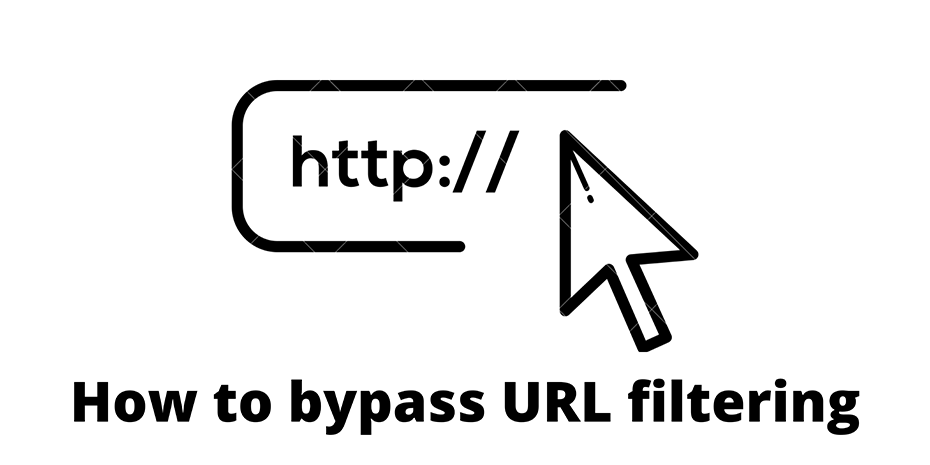Learn how to bypass URL filtering.
URL filtering is commonly employed in areas like companies, schools, and other institutions where unrestricted access to the internet is desired. The best URL filtering software is efficient and straightforward.
There will be instances, though, when you need to visit prohibited URLs for whatever reason. The good news is that with a little basic understanding, you can simply evade URL filtering. In this article, we’ll show you how to do it and what you should be cautious of along the procedure.
Preparation of how to bypass URL filtering
Make sure your computer has sufficient of battery power and is linked to a stable internet connection before you start. Prepare to download software (if possible), and make sure you’re not doing anything unlawful or against business rules.
We also recommend devoting some time to figuring out how to get around URL filtering. If you have an hour or two to spare, now is the time to get started!
Step 1: Consider using a virtual private network (VPN).
You should be able to easily bypass most URL blocking software and access websites from anywhere in the globe if you can install and utilize a VPN. You’ll need to install a VPN to get started, and there are plenty of free ones available. You’ll have to attempt another way if your employer’s system administrator has restricted software installations.
If you are successful in setting up a VPN, you can simply change the location to another country to gain access to prohibited content. Because URL filtering is done at the country level, and a VPN sends your traffic through an international server, this usually works.
For example, if a website’s.com version is restricted, you can use your VPN to connect to the Australian version instead.
Step 2: Make use of a proxy server.
Proxies have been around for a long time and have long been a favourite of pupils who want to access websites that are prohibited. They can also be used to get around URL filtering.
Proxy servers, like VPNs, route your traffic through a different server. They’re usually application-specific and function by altering your IP address to make you appear to be in another country.
The disadvantage is that proxies are not the safest approach to get around URL filtering. Free proxies can insert adverts and collect user data, and they don’t always employ encryption. If you do decide to use a proxy, make sure you choose one that is trusted.
Step 3: Use Google Translate to access international versions.
Using Google Translate is a creative way to get around URL restrictions. To put it another way, you can have it act as a proxy server, redirecting your traffic to an international version of the website you want to visit.
Copy the URL you want to visit and paste it into the Google Translate tool’s left-hand window. (You must use the translate.google.com version, not the Google search engine’s built-in version.)
Then, on the right-hand panel, change the language, hit the Translate button, and click the produced link to get to the filtered website. This strategy may not work for all sites, but if you’re having difficulties, it’s worth a shot.
Step 4: Download and install the Tor browser.
If you can’t get a VPN or proxy to operate, the Tor browser (opens in a new tab) may be your only alternative. It uses the Tor network to provide anonymous browsing, sending your traffic through many servers to avoid URL filtering.
Install the Tor browser first. If possible, use it alongside a VPN for optimal performance, while it isn’t technically necessary. It’s free to download and use, and it lets you surf the deep web and regular websites.
The disadvantage is that if you can’t install new apps, you won’t be able to use Tor. It’s extremely slow, which makes it difficult to use. It will, however, operate, and if you can get it installed, you will almost certainly be able to defeat URL filtering.
Step 5: Use an SSH tunnel if possible.
In a similar way to VPNs, using an SSH tunnel allows you to bypass banned URLs. They are, however, more expensive to set up, demand more technical knowledge, and offer no significant advantages over VPNs in this situation.
If you’re tech-savvy and already have an SSH server, you might want to use an SSH tunnel. You’ll need to connect to it remotely to get started. To route, your internet traffic, set up tunnelling. This allows you to visit web pages as if you were physically there near your SSH server. You can view international versions of filtered URLs by doing so.
Summary
Although URL filtering is normally implemented for a good cause, there are situations when you’ll want or need to overcome it to access specific websites. We’ve discussed numerous options in this article.
The most straightforward approach is to use a VPN, but it isn’t the only one. Proxies are versatile, beginner-friendly tools, and you may even be able to bypass screening by using Google Translate. Using the Tor browser or SSH tunnelling needs a little more technical know-how, and for most individuals, they should only be used as a last resort. They are, however, both effective.
